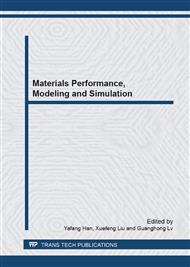p.299
p.303
p.308
p.316
p.322
p.328
p.337
p.343
p.349
Investigation on the Preparation and Properties of MoCu Gradient Material
Abstract:
In this study, MoCu gradient materials were prepared by the combination methods of liquid phase sintering and permeability copper. The effect of pressure and sintering temperature on the properties of MoCu gradient materials was studied. The physical and mechanical properties of MoCu20/MoCu40 and MoCu20/MoCu30/MoCu40 gradient materials were tested respectively. The results showed that the relative density of green compact and sintered gradient materials increased with the increase of pressing force from 10 tons to 30 tons. The electrical conductivity and hardness of sintered compact achieved the maximum value by the 20 tons. Within the sintering temperature range of 1100 to 1400, the relative density, electrical conductivity and hardness of sintered gradient materials increased with the increase of sintering temperature. The overall properties of sintered materials were obtained at 1350. For two-layer and three-layer MoCu gradient materials, their microstructures and chemical compositions showed a continuously and gradient change. The bending strength and the thermal conductivity of three-layer MoCu gradient materials were better than that of two-layer gradient materials.
Info:
Periodical:
Pages:
322-327
Citation:
Online since:
March 2013
Authors:
Keywords:
Price:
Сopyright:
© 2013 Trans Tech Publications Ltd. All Rights Reserved
Share:
Citation:


